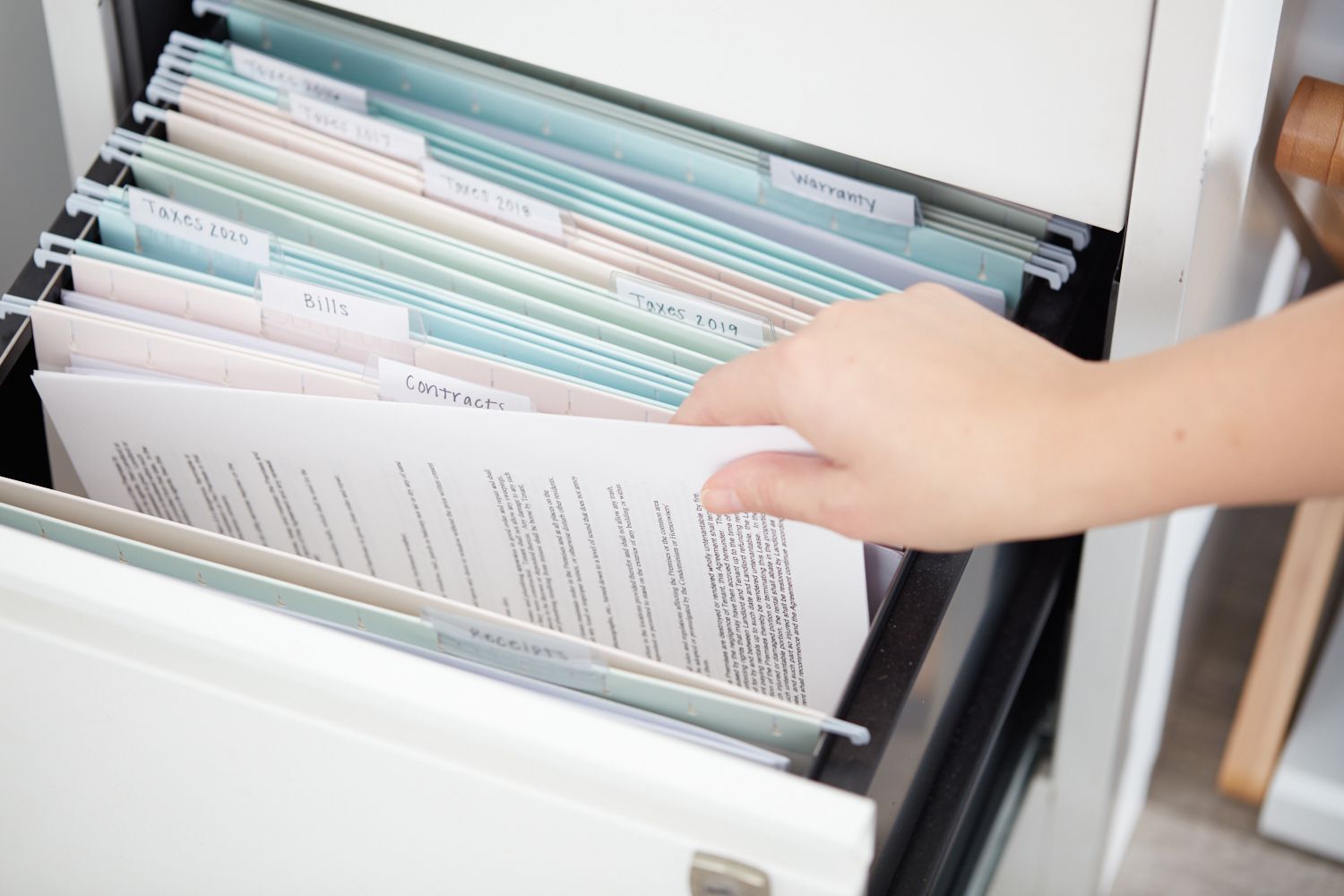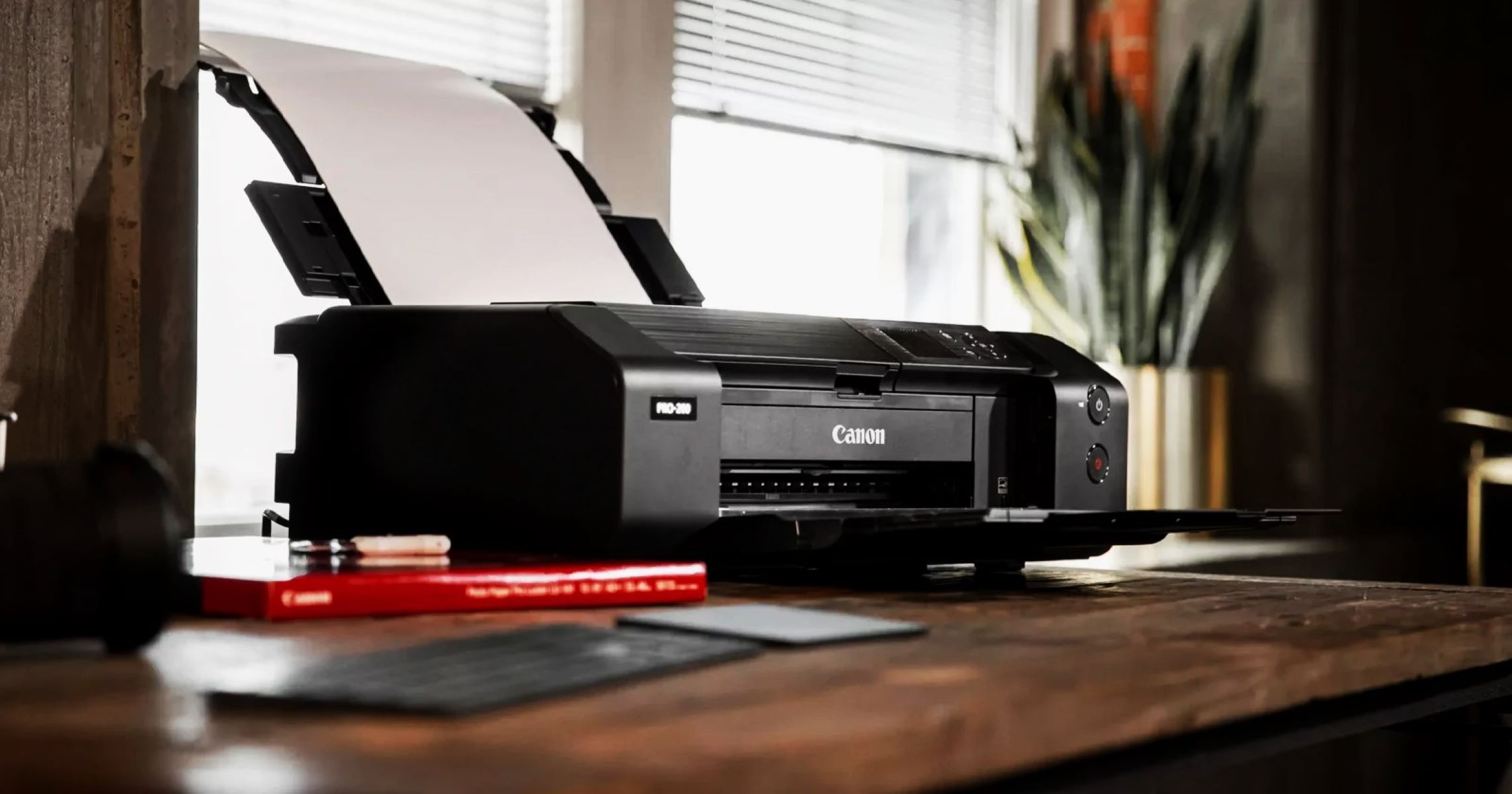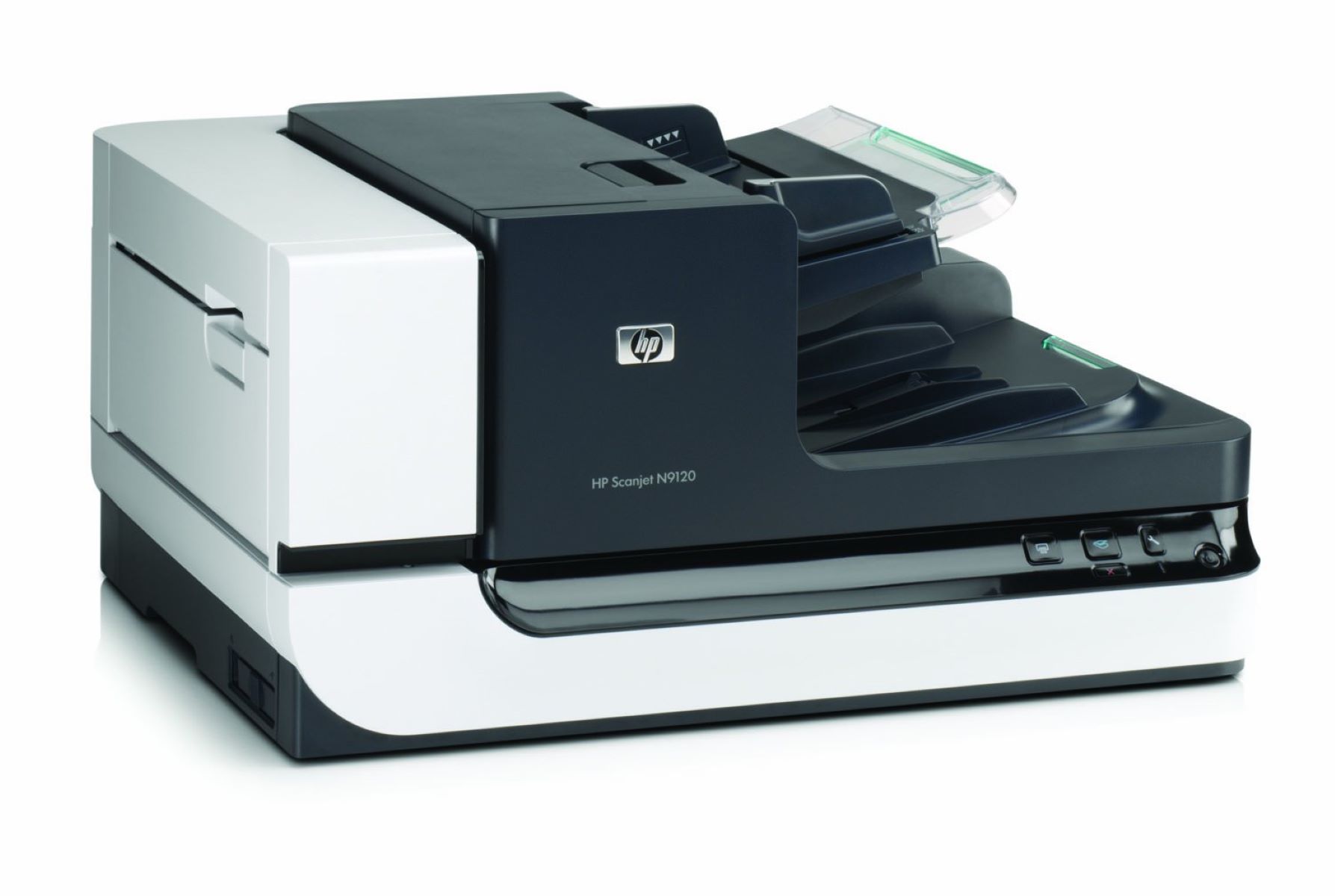

Articles
How To Store Documents At Home
Modified: January 6, 2024
Learn how to store articles and documents at home effectively with these useful tips and organization strategies. Keep your important papers safe and easily accessible!
(Many of the links in this article redirect to a specific reviewed product. Your purchase of these products through affiliate links helps to generate commission for Storables.com, at no extra cost. Learn more)
Introduction
Storing and organizing documents at home can be a challenging task, especially if you have a large collection of important papers. Whether it’s financial documents, medical records, or legal papers, having an effective system in place is essential for easy retrieval and peace of mind.
In this article, we will guide you through the process of storing documents at home, from assessing your storage needs to creating an efficient organization system. We will cover important considerations such as choosing the right storage containers, determining a suitable storage location, and ensuring proper document protection. By following these steps, you can maintain the security and accessibility of your documents while minimizing clutter and confusion.
So, let’s dive in and discover the best practices for storing documents at home!
Key Takeaways:
- Efficient document storage at home requires careful assessment of storage needs, selection of appropriate containers, creation of an organized system, and ensuring proper protection to safeguard important papers from damage and loss.
- Regular maintenance and updates are crucial for an effective document storage system, including removing unnecessary documents, updating labels and indexes, reassessing categories, and staying informed about document management tools and technologies.
Read more: How To Store Documents
Assess Your Storage Needs
Before you start storing your documents, it’s important to assess your storage needs. Take some time to evaluate the types and quantity of documents you have, as well as the frequency of access you may require.
Begin by gathering all your documents in one place and sorting them into categories. This will help you determine the amount of storage space you’ll need. Consider factors such as the size of the documents, whether they are sensitive or require special care, and any specific storage requirements they may have.
Once you have a clear understanding of your storage needs, it’s time to consider the available storage options. Do you have enough space in your existing cabinets or shelves? Or will you need to invest in additional storage solutions such as file boxes, filing cabinets, or storage bins?
Remember to consider the long-term growth of your document collection. If you anticipate that your collection will grow over time, choose storage options that can accommodate future expansion. It’s better to plan ahead and avoid the hassle of finding additional storage space later.
Another important aspect to consider is accessibility. Think about how often you will need to access your documents and how easily you want to reach them. If frequent access is required, opt for storage solutions that offer quick and convenient retrieval. Alternatively, if the documents are less frequently accessed, you may prioritize long-term storage options that offer better protection and preservation.
By carefully assessing your storage needs, you can make informed decisions about the best storage solutions to meet your requirements. This will help you create an efficient and organized document storage system that suits your specific needs and ensures easy retrieval when necessary.
Choose the Right Storage Containers
Once you have assessed your storage needs, the next step is to choose the right storage containers for your documents. The right containers will provide protection against damage, moisture, and other potential risks.
When selecting storage containers, opt for ones specifically designed for document storage. Look for containers that are durable, moisture-resistant, and preferably made of acid-free materials to prevent degradation of your documents over time. Acid-free containers will help preserve the quality of your papers and prevent them from yellowing or becoming brittle.
Consider the size and capacity of the containers as well. Choose containers that are spacious enough to comfortably hold your documents without causing them to bend or crumple. It’s also a good idea to select containers with handles for easier transport and stacking, especially if you have a large number of documents to store.
If you have documents that are susceptible to damage from light or heat, look for specialized containers that provide extra protection against these elements. Light-blocking containers, for example, can help preserve the integrity of sensitive documents that are easily faded or discolored by exposure to light.
It’s worth investing in archival-quality storage containers or acid-free document folders for valuable or irreplaceable documents. Such containers are specifically designed to protect delicate or historical papers, and they often come with added features like reinforced corners and acid-free lining.
Remember to label your storage containers clearly. Use waterproof and fade-resistant labels to ensure that you can easily identify the contents of each container without any confusion.
By choosing the right storage containers, you can ensure that your documents are well-protected and preserved for the long term. This step will go a long way in maintaining the integrity of your documents and preventing damage or loss.
Create a Document Organization System
Creating a document organization system is crucial for keeping your documents easily accessible and efficiently stored. Without a proper system in place, it can be challenging to locate specific documents when needed.
Start by determining a logical and consistent method for organizing your documents. This can be done by using categories such as financial, medical, legal, personal, or any other relevant classification that suits your needs. You may also consider further subcategories within each main category to provide more specific organization.
Next, establish a naming convention for your documents. Consistency in file naming will greatly simplify the process of searching for specific files. Include relevant details like the document type, date, or a brief description in the file names to make it easier to identify files at a glance.
Consider creating digital copies of your documents and organizing them electronically. Digital storage not only saves physical space but also allows for easy and quick access to your documents. Use a cloud storage service or a dedicated document management system to store and organize your digital files.
If you prefer physical copies of your documents, consider using color-coded folders or labels to differentiate between different categories or subcategories. For example, you can use red folders for financial documents and blue folders for medical records. This visual differentiation will make it easier to locate specific documents.
Additionally, create an index or a document inventory to track the location of all your documents. This will serve as a reference guide for quick retrieval when needed. Include important details such as the document’s location, category, and any relevant keywords or tags that will help you search for it later.
Regularly review and audit your document organization system to ensure that it remains efficient and effective. As your document collection grows, you may need to make adjustments to categories, add new folders, or update your digital organization system to accommodate new files.
By taking the time to create a document organization system, you’ll save yourself the frustration of searching for lost documents. It will also streamline the process of storing new documents and maintaining an organized environment for all your important papers.
Sort and Categorize Documents
Once you have established a document organization system, it’s time to sort and categorize your documents accordingly. This step is essential for creating a streamlined and efficient storage system.
Begin by separating all your documents into broad categories based on your chosen organization system. Gather similar documents together, such as all financial statements, medical records, or legal contracts. This initial sorting will help you identify the main categories that will become the foundation of your document storage system.
Next, within each main category, further sort and categorize the documents into more specific subcategories. For example, if you have a main category for financial documents, you can create subcategories for bank statements, tax returns, investment records, and so on.
Consider utilizing color-coded folders or labels to visually differentiate between different categories or subcategories. This makes it easier to locate specific documents at a glance, especially if you have a large collection of papers.
As you sort and categorize your documents, take the opportunity to purge any unnecessary or outdated papers. Discard any documents that are no longer relevant or required to minimize clutter and make space for new documents.
If you are organizing digital documents, utilize folders and subfolders to replicate the same categorization structure as your physical documents. Make sure to label each folder with a descriptive name to make navigation easier.
It’s important to be consistent in your sorting and categorization efforts. Train yourself to immediately place new documents into their respective categories, both physically and digitally, to maintain an organized system moving forward.
Regularly revisit and review your categories and subcategories to ensure they remain relevant and up-to-date. As your document collection grows, you may need to make adjustments or create new categories to better accommodate your evolving needs.
Sorting and categorizing your documents provides a solid foundation for an organized system. It simplifies the process of storing new documents and makes it easier to locate specific papers when needed.
Read more: How To Store Old Documents
Determine a Storage Location
Once you have sorted and categorized your documents, the next step is to determine a suitable storage location for them. The right storage location will provide easy access while ensuring the safety and security of your documents.
Consider the following factors when selecting a storage location:
Accessibility:
Choose a location that is easily accessible to you. If you need to frequently retrieve or update your documents, opt for a storage location that allows for quick and convenient access.
Climate control:
Ensure that the storage location provides a controlled climate to protect your documents from extreme temperatures, humidity, and moisture. Basements or attics, for example, are often prone to fluctuations in temperature and humidity and may not be ideal options for document storage.
Security:
Consider the security of the storage location. If your documents contain sensitive or confidential information, it’s crucial to choose a storage area that provides adequate security measures, such as lockable cabinets or rooms.
Read more: How To Store Important Documents
Protection from hazards:
Look for a storage location that offers protection from potential hazards such as fire, water damage, pests, or theft. If possible, store your documents in fire-resistant cabinets or use archival-quality containers that offer added protection against these risks.
Space availability:
Assess the available space in your home and choose a storage location that can accommodate your document collection. Ensure that there is enough room for growth if you anticipate your collection expanding in the future.
Separation from everyday living areas:
Avoid storing your documents in areas that are frequently accessed or prone to accidents or spills. Keep them separate from everyday living areas to minimize the risk of damage or loss.
Backup storage:
Consider creating backup copies of your documents and storing them in a separate location, preferably off-site. This will provide an additional layer of protection in case of unexpected events like natural disasters or accidents.
By carefully considering these factors, you can determine the most suitable storage location for your documents. Remember to periodically review the storage conditions and make any necessary adjustments to ensure the continued safety and accessibility of your important papers.
Read more: How To Store Paper Documents
Ensure Proper Document Protection
When storing documents at home, it’s crucial to prioritize their protection to prevent damage or loss. By taking appropriate measures, you can ensure the longevity and integrity of your important papers. Here are some key steps to ensure proper document protection:
1. Use Protective Sleeves or Covers:
For fragile or delicate documents, consider using protective sleeves or covers. These can help safeguard papers from tears, stains, or other physical damage. Look for acid-free and archival-quality sleeves that provide both physical and chemical protection.
2. Keep Documents in Dry Areas:
Avoid storing documents in areas prone to dampness or high humidity. Moisture can cause paper to deteriorate, leading to mold growth or ink bleeding. Choose dry areas with good ventilation to prevent moisture-related damage.
3. Protect Against Light Exposure:
Prolonged exposure to light can cause documents to fade or discolor over time. Store your documents in a location where they are shielded from direct sunlight or artificial light. If necessary, use light-blocking containers or folders to further protect sensitive papers.
Read more: How To Store Paper Documents Long-Term
4. Guard Against Fire and Water Damage:
Consider investing in fire-resistant storage containers or safes to protect your documents from potential fire hazards. In case of a water-related incident, store your papers in waterproof containers or use plastic sleeves for added protection.
5. Control Pests:
Protect your documents from potential damage caused by pests such as insects or rodents. Use pest-proof storage containers and regularly inspect the storage area for any signs of infestation. Keep the area clean and free from food debris that may attract pests.
6. Avoid Staples, Paperclips, and Rubber Bands:
While it may be tempting to use staples, paperclips, or rubber bands to keep documents together, these can cause damage over time. These fasteners can rust, corrode, or leave impressions on the papers. Instead, consider using archival-quality folders or binders to organize your documents.
7. Regularly Check and Replace Storage Containers:
Inspect your storage containers periodically for any signs of wear or damage. Replace containers that are showing signs of deterioration to maintain optimal document protection. Regularly retiring old containers ensures that your documents remain safe and secure.
Read more: How To Store Important Documents At Home
8. Keep Documents Elevated:
Store your documents on shelves or in cabinets to protect them from potential damage caused by flooding or accidental spills. Keeping them elevated and away from the floor helps minimize the risk of water damage.
By implementing these measures, you can safeguard your documents from various risks and ensure their long-term preservation. Investing in proper document protection now can save you from potential headaches and loss in the future.
Label and Track Documents
Labeling and tracking your documents is essential for easy identification and efficient retrieval. Without proper labeling, it can be challenging to locate specific papers when needed. Follow these steps to effectively label and track your documents:
1. Use Descriptive Labels:
Label each storage container, folder, or file with a clear and descriptive label. Include relevant information such as the category, subcategory, and a brief description of the contents. This will make it easier to identify and locate specific documents quickly.
2. Utilize Color-Coding:
Incorporate a color-coding system to visually differentiate between different categories or subcategories. Assign specific colors to each category or use colored labels, folders, or tabs. This will streamline the process of identifying and retrieving documents, especially when you have a large collection.
Read more: How To Store Family History Documents
3. Create a Document Index:
Maintain a document index or inventory to keep track of all your documents. Include important details such as the document’s title, location, category, and any relevant keywords or tags. This index will serve as a roadmap to quickly locate specific papers without having to search through every storage container.
4. Implement a Digital Tracking System:
If you have digital documents, use a document management system or cloud storage service that allows for easy indexing and tracking. Utilize file naming conventions, folders, and metadata to organize and categorize your electronic files effectively.
5. Update as You Store and Retrieve:
Consistently update your document tracking system as you store or retrieve documents. Whenever you add new documents, assign them to the appropriate category and label them accordingly. Likewise, after retrieving a document, update the index or tracking system to indicate its new location.
6. Regularly Review and Audit:
Periodically review and audit your document labeling and tracking system to ensure its accuracy and efficiency. Remove any outdated or irrelevant information, update labels as needed, and optimize your system to reflect any changes in your document organization.
7. Backup Electronic Tracking Systems:
If you are using a digital tracking system, regularly backup your data to avoid any potential loss. This will ensure that your document index and tracking information are securely stored in case of any technical issues or data loss incidents.
By implementing a robust labeling and tracking system, you can minimize the time and effort required to locate specific documents. It provides an organized roadmap for efficient document retrieval and reduces the chances of misplacing or losing important papers.
Regularly Maintain and Update
Maintaining and updating your document storage system is essential to ensure its continued effectiveness and efficiency. Here are some key steps to regularly maintain and update your system:
1. Schedule Regular Maintenance:
Set aside dedicated time at regular intervals to review and maintain your document storage system. This could be a monthly or quarterly task, depending on the volume and frequency of document updates. Regular maintenance helps keep your system organized and up-to-date.
2. Remove Unnecessary Documents:
Periodically assess your documents to identify any papers that are no longer needed or relevant. Dispose of or shred these unnecessary documents to free up space and minimize clutter in your storage system. Be mindful of legal requirements for document retention periods, especially for sensitive information.
Read more: How To Scan Documents On A Printer
3. Update Labels and Indexes:
As you add new documents or make changes to existing ones, remember to update the labels on your storage containers and the entries in your document index or tracking system. This ensures that your system remains accurate and reflects any modifications or additions.
4. Reassess and Adjust Categories:
Regularly reassess your document categories and subcategories to ensure they still make sense for your evolving needs. Adjust or add categories as necessary, especially if you notice patterns or themes emerging in your document collection. Fine-tuning your categories will improve the overall organization and retrieval process.
5. Conduct System Audits:
Perform periodic audits of your document storage system to identify any areas that require improvement or adjustment. Analyze the efficiency of your system, gathering feedback from any users, and make necessary adjustments to enhance its usability and effectiveness.
6. Back up Digital Documents:
If you store digital copies of your documents, ensure that you have a reliable backup system in place. Regularly back up your electronic files to secure storage locations, whether it’s cloud storage or external hard drives. This protects your documents from the risk of data loss or technical failures.
Read also: 14 Best Document Storage For 2024
7. Stay Updated on Document Management Tools:
Stay abreast of new developments in document management tools and technologies. As new solutions emerge, assess whether they can enhance or simplify your document storage and organization system. Consider adopting new tools or practices that align with your needs and improve efficiency.
By regularly maintaining and updating your document storage system, you can ensure that it remains effective and fits your evolving requirements. A well-maintained system will support easy retrieval, prevent clutter, and help you stay organized and in control of your important documents.
Conclusion
Storing and organizing documents at home is a critical task that requires careful planning and implementation. By following the steps outlined in this article, you can create an efficient and effective document storage system that ensures easy retrieval, protects against damage, and minimizes clutter.
Start by assessing your storage needs and selecting the appropriate storage containers that offer protection and preservation for your documents. Create a document organization system that is logical, consistent, and easy to maintain, categorizing and labeling your documents accordingly. Determine a suitable storage location that provides accessibility, climate control, security, and protection from hazards.
Ensure proper document protection by using protective sleeves, storing documents in dry areas, guarding against light exposure, and protecting against fire, water damage, and pests. Label and track your documents with descriptive labels, color-coding, and digital tracking systems to easily locate and retrieve specific papers. Regularly maintain and update your system, removing unnecessary documents, updating labels and indexes, reassessing categories, and conducting system audits.
By consistently maintaining and updating your document storage system, you can ensure its continued effectiveness and adaptability to your changing needs. Regular maintenance and organization will save you time and effort in the long run and provide peace of mind knowing that your important documents are secure and easily accessible.
Remember, the key to successful document storage is finding a balance between security, accessibility, and organization. With the right system in place, you can efficiently manage your documents at home, making your life easier and allowing you to focus on more important matters.
Frequently Asked Questions about How To Store Documents At Home
Was this page helpful?
At Storables.com, we guarantee accurate and reliable information. Our content, validated by Expert Board Contributors, is crafted following stringent Editorial Policies. We're committed to providing you with well-researched, expert-backed insights for all your informational needs.







0 thoughts on “How To Store Documents At Home”